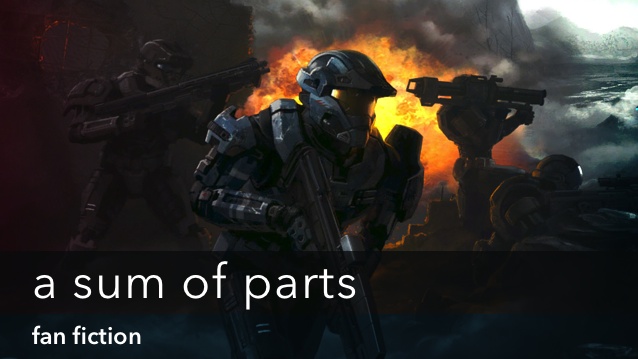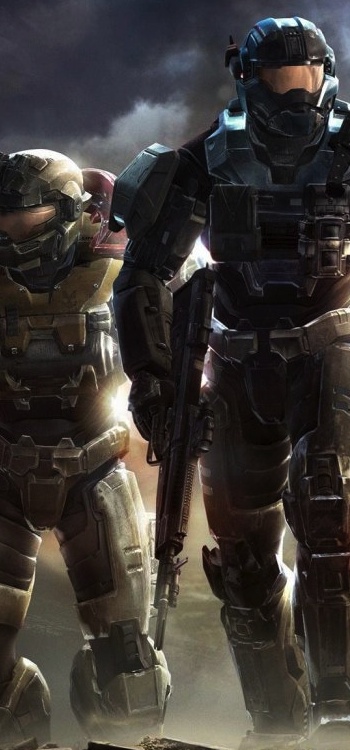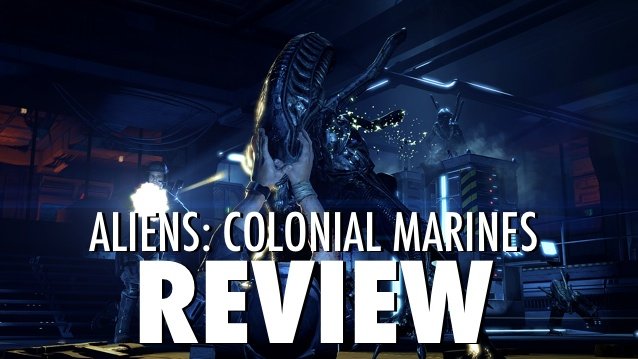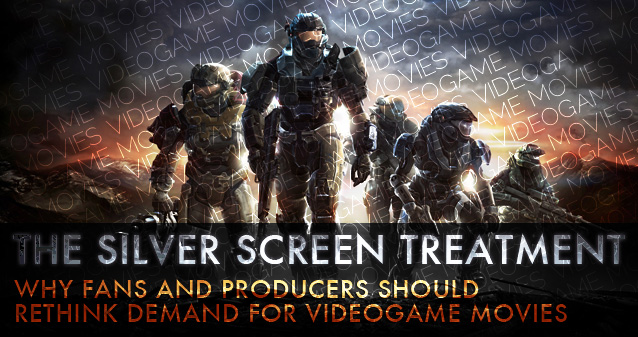


The way the Halo series utterly refuses to tell me its story has always been attractive to me. It’s like some kind of reverse psychology. The more Halo refuses to tell me what is going on, the more I want to know. I’ve always been able to sense that behind these stages of shooting aliens and alien-zombies there is a rich fictional universe , but the games don’t give it up lightly. If you want to understand Halo’s story, you have to go find it.
The first Halo is perhaps the best example of this. Bungie created a massive universe of ancient civilisations and intergalactic wars that serve as simply a backdrop for the tiniest of skirmishes. It’s easy to forget in the context of the later games, but the first Halo was just one human ship crashed on a weird planet and fighting one Covenant fleet. Ignoring the significance of the ring for a moment, in the Covenant/Human war the events of the first Halo are just a footnote. Just a thing that happened over there while the rest of the war waged on.
To get Halo’s story, you have to do the work yourself.Then when Halo 2 came out, somehow Master Chief had already found his way back to Earth since the end of the first game. The game never bothers to tell the player how this happened. It just did, okay?
To get Halo’s story, you have to do the work yourself. You have to read the novels that explore the events between the games. You have to find the hidden terminals in the later games that give important background info. You have to watch the live-action trailers. You have to watch the animated series. You have to read the Wikias put together by people who figured things out you never did. You have to connect the dots yourself. You have to be a fan.

The Halo games aren’t interested in telling a story. They are interested in just dipping the player into the narrative and having them acts out bits of it. You might not know what is going on. In fact, a lot of the time, you probably won’t. But if you do your research and pay close attention, you might just understand.
This has created two fairly distinct camps for Halo players: those that think the story is absolutely incoherent and those that think it is incredibly detailed. Neither camp is wrong; each is just approaching the franchise in different ways.
Halo: Reach in particular depends on a player base that have done their research, that know the world’s story before they play the game. Having read the first Halo’s manual and, more significantly, the first Halo novel, I knew exactly what Reach was the very first time I heard the name of the game. It was a prequel and a tragedy. I was never obsessed with Halo’s fiction, mind, but I had done enough research myself that I already knew what this was.
Further, if you have read the book Ghosts of Onyx, you will know that after the success of the SPARTAN-II program that created Master Chief and his ilk, the UNSC scrapped the program for cheaper, slightly weaker but still super powerful SPARTAN-IIIs. In Reach, Noble team are SPARTAN-III’s—except Jorge, who is a SPARTAN-II. This doesn’t matter. But if you know this, and you can clearly see the difference in size between Jorge and the rest of Noble team, you understand why. It also helps you understand the different way Jorge relates to Doctor Halsey, as the SPARTAN-II subjects had a much closer relationship to her. Halsey, too, is a character that has never appeared in the games before Reach, but neither does the game waste any time introducing her. She is just there. If you’ve read the books, you’ll know who she is.
Not knowing any of this won’t prevent a player from enjoying Reach. It’s not that you have to do research to understand the game, but the extra details and consistency of the world add an extra layer of textual richness for those that have done their research, that have gone looking for the story rather than sit back and expect to be told it.
But even beyond the game, in the game’s marketing material, this reward for the most committed fans was present. The first Halo novel, The Fall of Reach, was also about the planet’s fall, and many fans who had committed themselves to learning this fiction were concerned that the new game would contradict the events of that book. But in the game’s very first announcement trailer, the body of a spartan is clearly visible floating into space beside a destroyed frigate. It’s easily missable, but if you’ve read the books, you will know this is a spartan who, during the events of The Fall of Reach was jettisoned from a destroyed frigate. This little nod to the events of the novel is there to assure the fans that the time they spent learning this world was not in vein, it would remain consistent.
For a lot of people, none of this matters. Not knowing these little things won’t prevent anyone from enjoying the tragic tale of Halo: Reach. But throughout the entire series, there is a commitment to ‘having a story’ and not telling it. A more active player can, if they wish to, understand Halo’s story on a far deeper and richer level than the player of most shooters. If you want to know what is going on, you have to go looking for it.




 How To Unlock WWE 2K15 Characters for PlayStation and Xbox
How To Unlock WWE 2K15 Characters for PlayStation and Xbox Witcher 3: Hearts of Stone - Dead Man's Party Quest Guide
Witcher 3: Hearts of Stone - Dead Man's Party Quest Guide Aliens: Colonial Marines Review: Manage Your Expectations
Aliens: Colonial Marines Review: Manage Your Expectations The Silver Screen Treatment - Why Fans and Producers Should Rethink Demand for Videogame Movies
The Silver Screen Treatment - Why Fans and Producers Should Rethink Demand for Videogame Movies ARK: Survival Evolved Wiki – Everything you need to know about the game .
ARK: Survival Evolved Wiki – Everything you need to know about the game .